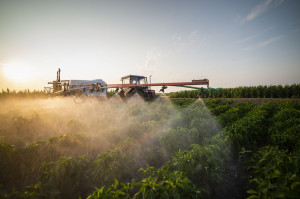 In February 2024, the United States agricultural sector encountered a significant regulatory development that has extensively impacted our growers and agrichemical businesses—following a court ruling, the use of dicamba-based weed killers was under scrutiny. Amid financial concerns and the approaching spring planting season, the U.S. Environmental Protection Agency (EPA) stepped in with a decision that has been universally received within the industry: the allowance for farmers to use their existing inventories of dicamba weed killers. This decision serves as a testament to the crucial role of responsive decision-making in agriculture.
In February 2024, the United States agricultural sector encountered a significant regulatory development that has extensively impacted our growers and agrichemical businesses—following a court ruling, the use of dicamba-based weed killers was under scrutiny. Amid financial concerns and the approaching spring planting season, the U.S. Environmental Protection Agency (EPA) stepped in with a decision that has been universally received within the industry: the allowance for farmers to use their existing inventories of dicamba weed killers. This decision serves as a testament to the crucial role of responsive decision-making in agriculture.
The Dicamba Controversy
Dicamba, renowned for its efficacy against challenging broadleaf weeds in major crops like soybeans and cotton, has been a focal point of discussion in both environmental and agricultural circles. Its propensity for drift has sparked spirited debates and legal action due to unintended effects on neighboring crops that are not genetically modified to resist dicamba. Our industry’s leading entities, including agrichemical giants such as Bayer, BASF, and Syngenta, have been ardent proponents for the continued utility of dicamba-based products, underscoring their invaluable contribution to integrated weed management systems.
A lawsuit challenging the EPA’s procedural adherence in the 2020 renewal of dicamba product registrations catalyzed a court ruling that aimed to restrict its application. The products in question, including Bayer’s XtendiMax, BASF’s Engenia, and Syngenta’s Tavium, are cornerstone treatments in American agriculture’s approach to weed resistance management.
EPA’s Interim Decision: A Respite for Growers
Judge David Bury’s direct order, granting a temporary solution by the EPA, underscored our federal agencies’ role in balancing regulatory oversight with agricultural pragmatism. By permitting the use of dicamba products procured before the legal injunction, the EPA has safeguarded our farmers’ immediate operational needs.
This decision, as articulated by Josh Gackle, president of the American Soybean Association, has been crucial for allowing growers to navigate through the 2024 growth cycle effectively, leveraging their strategic investment in these critical agrichemical resources. The necessity for these interventions reflects the dynamic nature of agricultural practices, highlighting the sector’s adaptive strategies to ensure crop productivity amidst regulatory shifts.
Implications for the Agrichemical Landscape
This pivotal moment accentuates the ongoing dialogue around sustainable agriculture and the strategic use of herbicides. As Bayer’s dicamba-resistant soybeans comprise a significant share of U.S. plantings, the industry’s response to the EPA’s decision illuminates the complex considerations surrounding agrichemical applications, crop safety, and environmental stewardship.
The agrichemical community has greeted the EPA’s decision with optimism; it provides a pathway to manage weed resistance effectively while respecting our environmental obligations. Both Bayer and Syngenta have reaffirmed their commitment to supporting farmers through innovative and sustainable solutions, whereas BASF has recognized the decision as an operational boon for growers facing weed resistance challenges in 2024.
Forward-Thinking in U.S. Agriculture
This scenario is emblematic of the broader adjustments required within our agrichemical practices, pitting the necessity for effective weed management against the imperative for ecological balance. It predicates a larger conversation about the future of agrichemical innovation — in product formulation, application technology, and crop genetics.
The EPA’s interim measure serves a dual purpose: it enables immediate continuity for our farmers while cementing the imperative for continued innovation within the agrichemical sector. As we progress, the industry’s trajectory will likely pivot towards developing precision agrichemicals with minimized ecological footprints, alongside crops optimized for resilience against a widening spectrum of threats.
The 2024 dicamba directive underscores the EPA’s role in addressing real-time challenges faced by our farmers, albeit within the scope of sustainable agricultural paradigms. It also illustrates the sector’s ongoing commitment to balancing crop production needs with environmental stewardship principles.
As part of the SpinnerAg community, we remain dedicated to sourcing and advocating for agrichemical solutions that not only address today’s challenges but pave the way for a more sustainable and productive tomorrow. Our commitment to reliability, expertise, and fostering long-term partnerships stands as our guiding beacon, as we navigate the evolving landscape of agricultural chemistry together.